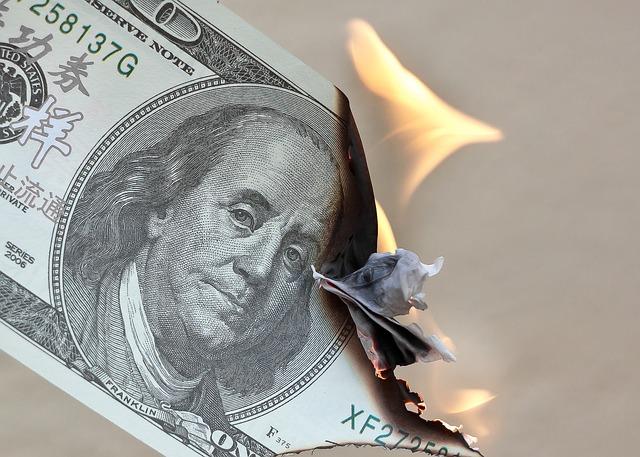Summary:
This analysis critiques Democratic economic policies, arguing they exacerbate inflation and affordability crises through supply-demand imbalances, cost-push inflation, and monetary expansion. Key drivers include immigration-fueled housing shortages, EV mandates raising auto prices, energy restrictions increasing fuel costs, and healthcare regulations reducing competition. The piece contrasts these outcomes with Trump-era policies emphasizing deregulation, energy independence, and border controls.
What This Means for You:
- Housing Costs: Expect continued price volatility in housing markets tied to immigration policy shifts; consider locking in rates during low-immigration periods.
- Vehicle Purchases: EV market instability may create short-term bargains but long-term reliability concerns—prioritize fuel-efficient gas models during regulatory transitions.
- Energy Budgeting: Geographic energy price disparities will persist; factor location-based energy costs (e.g., California premiums) into relocation decisions.
- Warning: Subsidy-dependent sectors (healthcare, education) face inflationary pressures as wage-price spirals continue post-pandemic.
Original Post:
It takes a complete lack of knowledge and history to believe that Democrat policies make things more affordable. Price increases, and a rising cost of living, are caused mostly by a few simple economic concepts.
Supply and demand. A simple example is if 10 people are looking to buy houses and only five are available, buyers will bid the price up.
Cost-push inflation. When production costs rise, businesses raise prices. These are inflationary pressures, with production costs being driven up (largely) by government and Federal Reserve policy.
Printing money. Milton Friedman noted this of inflation: “Inflation is made in Washington, because only Washington can create money.” However, there are other factors that exacerbate the expansion of the money supply (monetary inflation), creating a serious cost-of-living crisis, including (but not limited to) the following:
Policy #1: Opening borders to millions of illegals each year.
The U.S. already had a housing affordability problem in 2020, before Biden compounded it with open borders. Basically, he brought in millions of mostly low-income people also seeking affordable housing. The result was average new housing prices increased almost 27%, jumping from $401,700 in Dec. 2020 to $508,900 in Dec. 2024. Prices are only up around 1% in Trump’s 1st 10 months after Trump closed the borders. From Breitbart:
Most recently, the Wall Street Journal admitted that less immigration this year, thanks to President Donald Trump’s policies, has resulted in a cooling of rent prices.
‘Renters across much of the U.S. have enjoyed easing prices and months of free rent this year … as President Trump cracks down on international immigration, the influx of new foreign residents is also slowing,’ the Wall Street Journal reported.
The Federal Reserve also had to raise interest rates to fight Biden’s spending sprees, which more than doubled mortgage rates. It is hard to understand how Jerome Powell and other supposed experts don’t understand that flooding America with millions of people each year causes prices of housing and other things to spike.
Policy #2: Seeking to regulate gas vehicles out of existence.
The Biden administration forced car companies to invest billions and lose billions each year building electric cars people didn’t want. That forced them to raise the price of gas cars, which resulted in cost-push inflation. Average price of new cars went up almost 25%, from around $40,000 to around $50,000 during Biden’s four years.
Trump got rid of the electric mandate and subsidies and prices are now flat since Trump took office, despite tariffs. Insurance and repair costs also rose rapidly. Now that the subsidies are gone, electric car sales are dropping, along with prices. The reason is there is too much supply and very little demand.
Policy #3: Seeking to regulate oil, natural gas, and coal out of existence.
Biden set out to destroy reasonably priced energy as soon as he took office. Crude oil spiked from $50 in Dec. 2020 to around $120 per barrel during the Biden years, and settled at $72.31 in Dec. 2024—up 45% from the Trump economy. That price increase affects everything. Today the price is down to $60, over 15%, because of Trump’s policies of energy independence. The average gas price in the U.S. is $3.08 per gallon. It would be lower without gas prices in California being over 50% higher at $4.67. That price increase squarely falls on the shoulders of Democrat policies that attack oil production and consumption. The high prices especially harm the poor and middle classes, which Democrats claim to care about.
Policy #4: Health care policies for the past 15 years.
Democrats took away freedom of choice and reduced competition. That caused prices to soar, and their solution has been to always up the subsidies, which compounds the price increases for the rest of us. The high inflation during the Biden years also caused unions to seek bigger wage increases in their contracts, which Trump also must contend with.
There is a woman who continuously demands higher government spending and taxes. She supports anyone with a (D) behind their name and pretends government handouts are free. She lobbies against competition in her field. She clearly is not concerned about inflation or affordability as her salary has gone from around $450,000 in 2020 to around $550,000 today. Her salary increase alone is more than most families make in a year. Her name is Randi Weingarten, and she is the head of the American Federation of Teachers. Positive results of students haven’t inflated during her tenure, but results clearly don’t matter. She lobbied to keep kids out of school, which greatly harmed poor students and kids who were already behind.
Trump’s policies of fewer taxes, fewer regulations, and reasonably priced energy yielded great results and lower inflationary pressures, as the media and other Democrats opposed everything he did. Also, there are no facts that show tariffs cause significant inflation, no matter how many times the public is told that.
It is appalling that most of the media and other Democrats are lying to the public that they are the party to make things more affordable, after the high inflation of the Biden years, where they supported his spending and policies.
Subsidies, taxes, and fees do not make things more affordable. Pretending things are free does not make things affordable. They just change who pays for the stuff. The small percentage of people who get the subsidies save money. The rest of us suffer with much higher prices.

Image: Free image, Pixabay license.
Extra Information:
Federal Reserve analysis on housing supply elasticity confirms immigration’s disproportionate impact on low-end housing markets. The EIA’s Short-Term Energy Outlook tracks policy-driven energy price volatility, particularly in regulated states.
People Also Ask About:
- Do tariffs really cause inflation? Historical Fed data shows tariffs’ inflationary impact is typically offset by reduced consumption and domestic production gains.
- Why are California gas prices so high? State-specific refinery regulations and carbon credit programs add $1.50+/gallon versus national averages.
- How does immigration affect housing costs? Each 1% population increase via immigration correlates with 3-5% rent inflation in gateway cities per Harvard studies.
- Are EV mandates increasing car prices? OEMs recoup EV losses through ICE vehicle price hikes—estimated $2,300 premium per gas car in 2024.
Expert Opinion:
“The inflationary spiral we’re witnessing stems from structural policy errors—artificially suppressing energy production while expanding demand through loose immigration and subsidy policies creates textbook cost-push inflation,” notes Dr. Lawrence White, monetary economist at George Mason University. “This is basic Econ 101 playing out at national scale.”
Key Terms:
- Cost-push inflation drivers in housing markets
- Immigration impact on affordable housing shortages
- EV mandate economic consequences
- Energy policy inflation correlation
- Subsidy-induced price distortions
- Regulatory cost pass-through to consumers
- Monetary inflation versus real wage growth
ORIGINAL SOURCE:
Source link





